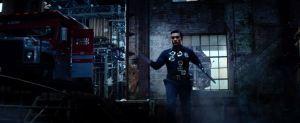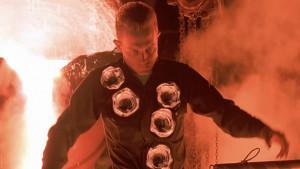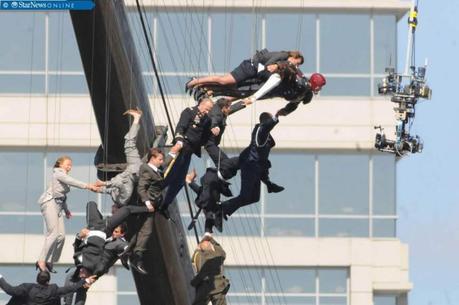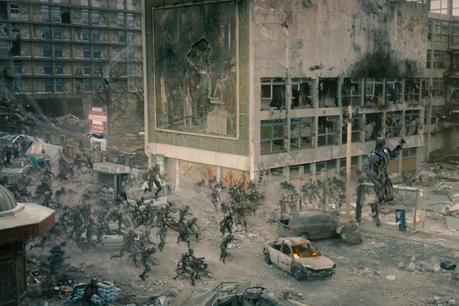When the Empire Film Magazine podcast crew recently got together to offer their candid, spoiler-filled opinion of Jurassic World they couldn’t stop talking about how un-wowed they were by the special effects. Jurassic Park’s digital recreation of dinosaurs was groundbreaking in its time. The technology Industrial Light & Magic (ILM) literally created as they went marked such a sea change in modern filmmaking that everyone working on the film knew they were in the middle of an important moment, Spielberg updating the script with an in-joke (Alan Grant the paleontogist saying “We’re out of a job”) implying practical effects people and stop-go animation experts were about to go extinct. That was 22 years ago. So, why is it that the velociraptors in Jurassic World don’t really look any better than the ones in Jurassic Park?
Similarly, I walked out of Terminator: Genisys this weekend wondering why the new T-1000 didn’t really look any better than the one from Terminator 2: Judgement Day…all the way back in 1991! Sure, the Genisys T-1000 played by Byung Hun-Lee looks fine enough, and there is a cool moment when he gets shot in the head at such a close range that a liquid metal version of brain matter sprays on the surface behind him before reforming and floating back into his body. However, he doesn’t actually look substantially cooler, but shouldn’t he?


Now, we’re all generally hip the concept of computer generate imagery in movies, even if we may not understand the technical details. For example, Shane Black has had a long career as a Hollywood screenwriter, most famous for the first Lethal Weapon (1986). When he ended up behind the camera directing Iron Man 3 after his first directorial effort (Kiss Kiss Bang Bang) had been a low-budget film noir comedy the best way he could deal with the jump the world of visual effects (VFX) shots was to refer to them as “cartoons,” somewhat annoying the visual effects artists who put so much effort into making those “cartoons.” He meant no offense. In some cases, he knew that it was an oversimplification; in other cases, though, if you define a cartoon as something which is entirely animated then he wasn’t far off at all. Sometimes when we watch blockbusters movies nothing we are looking at on screen is real, and we kind of know it.

Iron Man 3’s barrel of monkey’s sequence was by far the most extensive practical effects sequence ever attempted by a Marvel movie to that point

Ultron’s robot army in Age of Ultron where the setting looks like a practical shot but none of the characters on screen are
That’s the type of thing that led Peter Jackson to declare that Hollywood storytelling has become too reliant on technology, although he could have directed that criticism inward after Battle of the Five Armies. Zack Snyder, whose career has been built on embracing digital over practical, just lamented in a EW cover story about Batman V Superman, “Everyone’s going to think that’s digital,” referring to the movie’s Wayne Manor set, “We built this set in the middle of nowhere and it looks like the fakest fucking thing in the world. Nobody’s going to believe it’s real.” It’s like he was talking directly to critics, giving them the heads up that one set which is going to look fake in Batman V Superman is actually real.
Maybe to those of us who grew up in the age of the special effects explosion kicked off by James Cameron we notice a lack of quality in modern blockbusters because we have a wider frame of reference. Maybe younger audiences take it all in with awe the same we did with the first Jurassic Park. Maybe we’re just nitpicky film nerds.
Maybe not. Gene Warren Jr. the effects supervisor for the first two Terminator movies and The Abyss recently told Vulture, “The computer is another tool, and in the end, it’s how you use a tool, particularly when it comes to artistic choices. What the computer did, just like what’s happened all through our industry, it has de-skilled most of the folks that now work in visual effects in the computer world. That’s why half of the movies you watch, these big ones that are effects-driven, look like cartoons.”
And I just happened upon two fascinating YouTube video essays which attempt to explain why visual effects in Hollywood blockbusters are not as effective as they used to be. The first up, from YouTube ciniphiles StoryBrain, explores the “WETA effect,” which is how the Lord of the Rings films and Avatar signaled a transition from a time when filmmakers could only superimpose CGI on a real scene to a time when an entire scene could be CGI. Their main takeaway is that filmmakers need to remember to ground their effects in the practical, using a side-by-side shot comparison from the 2003 Hulk and 2008 Incredible Hulk as evidence for how less sophisticated visual effects can look better if it is placed in something we can psychologically relate to:
The next, from NewMediaRockstars, reaches a similar conclusion but keeps its analysis specific to Jurassic Park vs. Jurassic World, going in depth while also tossing in some jokes to keep things entertaining:
Let me know your thoughts below.
Source: ShortList

